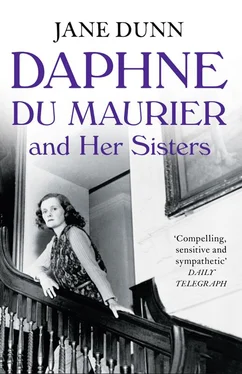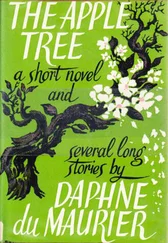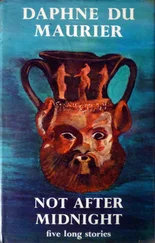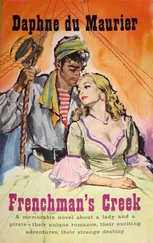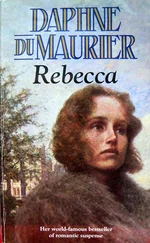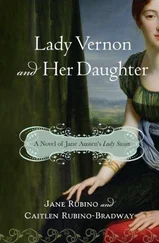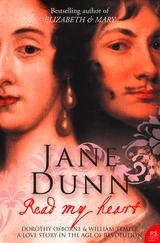The intriguing threads of inheritance, character, family mythology and circumstance combine with early experience to create the pattern of a life. It is in childhood that these elements make their deepest impression. Here can be found possible reasons for Angela’s lack of perseverance that became a lasting regret: ‘I have always been an easily discouraged person … I had not the “guts” to start again writing’. 4Inheritance and familial experiences gave Daphne the contrary commitment; imagination and writing were the things most worthwhile in life. It helped that her talent was encouraged by her doting Daddy who saw so much in his favourite tomboy daughter to remind him of his own father. ‘[He] told me how he had always hoped that one day I should write, not poems, necessarily, but novels … “You remind me so of Papa,” he said. “Always have done. Same forehead, same eyes. If only you had known him.”’ 5
In childhood Jeanne found the seeds of her later independence. Her mother’s favourite and perhaps the most honest and down-to-earth of them all, she was the youngest sister who chose a discredited style of painting as her life’s work and managed to live openly until her death with a woman poet as her partner, despite the oft-expressed antipathy of her father towards people like her.
The sense the family had of being glamorous, exceptional and blessed with French blood was reinforced by the private language they shared. This was a highly visual and entertaining creation that bound them together as a tribe and kept out pretenders. Daphne’s fascination with the Brontës and Gondal, their imaginary world, brought the verb ‘to Gondal’ into the sisters’ lexicon, meaning to make-believe or elaborate upon. Nicknames too were a du Maurier habit. Angela became various forms of ‘Puff’, ‘Piff’ and ‘Piffy’; Daphne was ‘Tray’, ‘Track’ or ‘Bing’; and Jeanne was ‘Queenie’ or ‘Bird’.
Exploring Daphne’s character and work in the context of her sisters, means she appears in a quite different light from the one that shines on her as the solitary subject of a life. She was shyly awkward and intransigent, a girl who escaped into her own imaginary world, where she was supreme. Intent on wresting control over her destiny she thereby influenced the lives of others, not least her sisters’.
In introducing her two much less famous sisters, I hope this book draws them from the shadows. I like to think that Angela, who longed for more notice during her lifetime and dreamed of having a film made from at least one of her stories (Daphne had ten – the unforgettable Rebecca , The Birds and Don’t Look Now among them), would have been delighted to be rediscovered, her books read, possibly even inspiring a belated dramatisation. Where Daphne controlled her universe, Angela, at the mercy of her emotions, seemed to be buffeted by hers. Unfocused when young, and wilting under pressure, her youth was marked by humiliations and missed opportunities, while she was intent on the pursuit of love. Later she discovered a remarkable courage to tackle in her novels and her life injustice in matters of the heart, and to live as unconventionally as she pleased. As she aged, however, the constraining bonds of her Edwardian upbringing tightened around her once more.
A little light shed on Jeanne might also lead to a wider audience for her art, with paintings taken out of storage in small galleries and hung on the walls, for new generations to appreciate. The largest public collection is at the Royal West of England Academy in Bristol, where the quiet atmospheric beauty of her works rewards the eye with a spare, unsentimental vision. She was perhaps the most solid and least flighty of them all. Jeanne was always the honest, boy-like sister and did not apparently struggle with questions of identity or her role in life. When she decided what she wanted to do, all her energy was committed to it, unlikely to be deflected by emotion or propriety.
Much has been written on every aspect of Daphne du Maurier’s work and life. Margaret Forster’s impressive biography published nearly twenty years ago remains the authority on her life, but there are other essential contributions from Judith Cook’s Daphne: A Portrait of Daphne du Maurier and Oriel Malet’s Letters from Menabilly . Her daughter Flavia Leng’s poignant memoir adds another layer of understanding. Daphne’s writing attracted penetrating analysis in Avril Horner and Sue Zlosnik’s Daphne du Maurier: Writing, Identity and the Gothic Imagination , and in Nina Auerbach’s personal take on the themes of Daphne’s fiction in Daphne du Maurier, Haunted Heiress . The rewarding mix of The Daphne du Maurier Companion , edited by Helen Taylor, and Ella Westland’s Reading Daphne , add their own layers of meaning. There is also a highly successful yearly literary festival at Fowey, established to honour Daphne’s close connection and imaginative contribution to that part of south-east Cornwall.
In this book I do not set out to write a full biography of each sister; nor have I the space to analyse their individual works in any depth, although I have discussed them when they offer extra biographical or psychological insights to the story. I have considered the du Maurier sisters side by side, as they lived in life. This adds a new perspective to the characters of each, as they evolve through the tensions and connections of ideas and feelings that flow within any close relationship. Most marked is how much the opinions and experiences of one sister find their way into the work of another. In their fiction particularly, Angela and Daphne each used aspects of their sisters’ lives to animate her own work. But all the du Maurier sisters drew on their unique childhood, a past that was always present, bringing light and dark to their lives and work.

Coats off, the music stops, the lights lower, there is a hush. Then up goes the curtain; the play has begun. That is why I’m going to begin this story ‘Once upon a time …’
ANGELA DU MAURIER, First Nights
TO BE BORN a du Maurier was to be born with a silver tongue and to become part of a family of storytellers. To be born the last of the du Mauriers, as the three sisters would be, was to be born in a theatre with the sound of applause, the smell of greasepaint, and the heart attuned to drama, tension and a quickening of the pulse. The du Mauriers were in thrall to myths of their ancestors. Even the romantic name that meant so much to them was an embellishment on something more mundane. As soon as they were old enough to understand, Angela, Daphne and Jeanne du Maurier realised they were special and had inherited a precious thread of creative genius that connected them to their celebrated forebears.
Although Daphne did marry, all three sisters evaded the conventional roles of wife and mother and rose instead to the challenge of living up to their name, a name they never relinquished. Two sisters expressed themselves through writing and the third through paint. The du Maurier character was volatile and charming, inflated with fantasy and pretence; characteristically they hung their lives on a dream and found little solace in real life once the romance had gone.
These three girls inherited a name famous on both sides of the Atlantic: their grandfather George du Maurier was a celebrated illustrator, Punch cartoonist and bestselling novelist. His most famous creation was Trilby and this sensational novel enhanced his fame and made him rich: it gave the world the ‘trilby’ hat and made his anti-hero, the mesmerist Svengali, part of the English language as a byword for a sinister, controlling presence. It was his first novel, Peter Ibbetson , however, that impressed his granddaughters most, insinuating into their own lives and imagination its haunting theme that by ‘dreaming true’ one could realise the thing one most desired. The sisters attempted in their different ways to practise this art in life and incorporate the idea in aspects of their work.
Читать дальше
